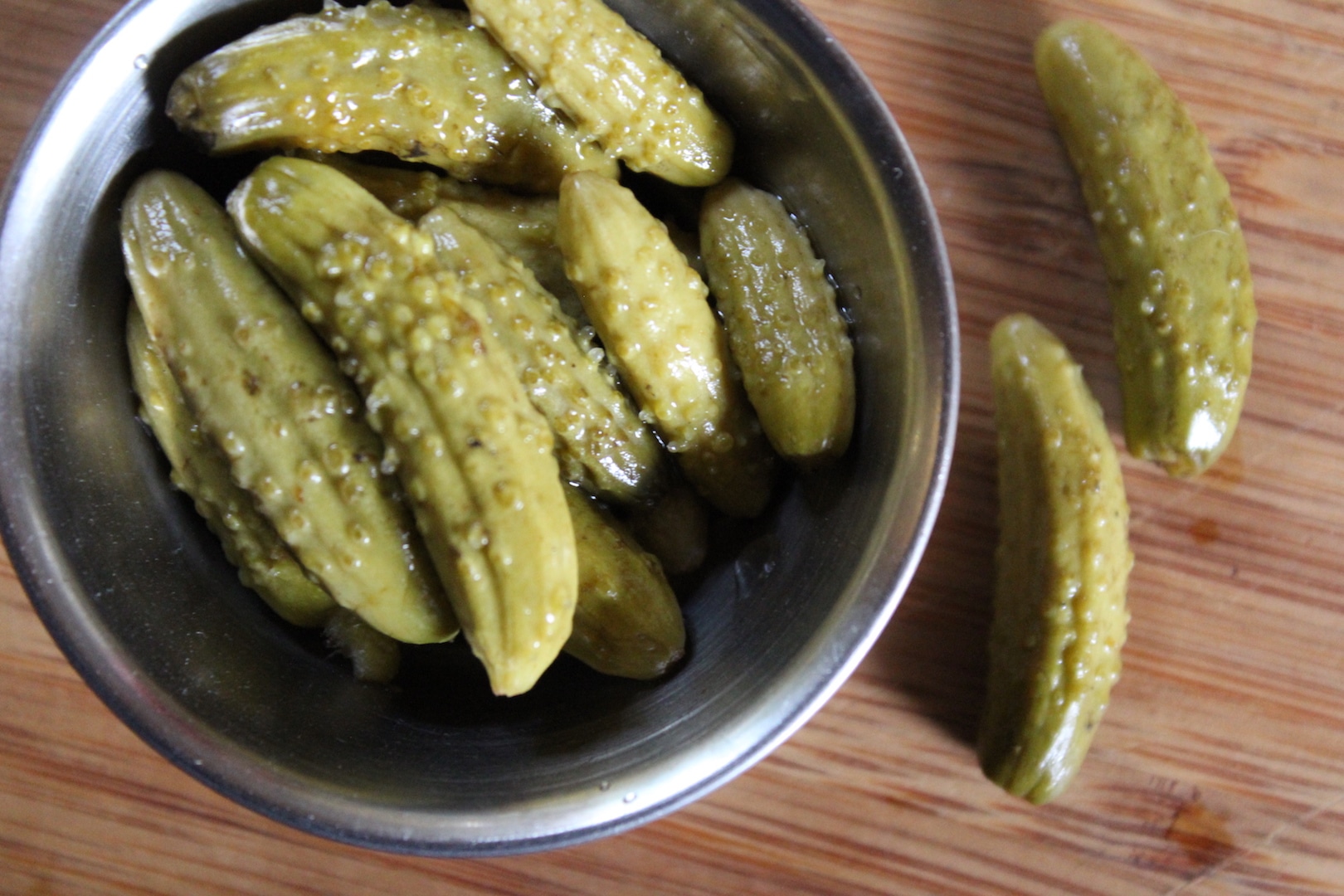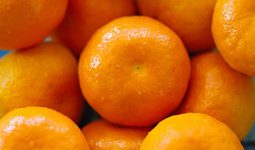Gherkins are always confused with cucumbers. What differentiates it from cucumber is its odd appearance. Gherkins are also called “mouse melons” or “cucamelons”.
Well, gherkin is different from cucumber. They are not the same but they belong to the same gourd family “Cucurbitaceae”. Even though gherkins are termed “miniature cucumbers”, they are from different cultivar groups.
Cucumber has only one specie, Cucumis sativus but gherkins (Mexican sour ghekins) is from the Melothria genus (Melothria scabra), a completely different genus from that of cucumber.
Other popular names of gherkins are:
- Creeping cucumber
- Pepquinos
- Cucamelon
- Mouse melon
- Mexican sour cucumbers
- Guadeloupe cucumber
- Mexican sour gherkins
- Mexican miniature watermelon
- West Indian burr cucumbers
- Gurkkijn (Dutch name meaning cucumber)
- Cornichon (French name meaning little horn)
Health Benefits of Gherkins
Though this is a popular vegetable, many are unaware of the health benefit it bestows. Below are some of the amazing health benefits of gherkins.
It is hydrating
Most of the contents of gherkins are water. This is what makes it a hydrating veggie. When you eat gherkins, it keeps your body hydrated and also helps the process of eliminating wastes and toxins.
The body uses water to eliminate toxins via sweat and urine. Increase your intake of gherkins during summer so you can beat the heat.
Rich in vitamin C
Gherkins have a rich content of vitamin C and this powerful antioxidant plays many important roles in the body. It boosts immunity and fights off infection.
It improves overall skin health and treat skin issues. You can apply gherkin paste directly on affected skin part to hasten healing.
Rich in fiber
Just like other vegetables, gherkins are rich in fiber. They are awesome for your digestive system. Fiber promotes optimal digestive system functions, improves bowel movement, feed helpful bacteria in the gut, and reduces high levels of cholesterol.
Fiber also reduces the risks of certain cancers. If you are looking for a way to increase your intake of fiber-rich foods, then consider adding gherkins to your meals.
Contains silica
Silica is an important nutrient needed by the body. It strengthens and maintains tendons, ligaments, and other connective tissues. Silica also promotes skin health and elasticity.
Gherkins contain silica and consuming them will offer your body this amazing nutrient that boosts youthfulness.
Highly nutritious
This vegetable is a storehouse of nutrients your body can’t do without. It contains vitamins A, B, C, and important minerals like potassium, manganese, calcium, and magnesium.
Potassium has many important roles in the human body. It helps the contraction of heart muscles and other muscles in the body. A deficiency of potassium leads to muscle problems, stomach pains, fatigue, and irregular pulse.
A regular intake of these nutrients will help you stay healthy and prevent diseases.
Rich in vitamin K
This nutrient is highly important in the body as a deficiency in this can be life-threatening. There are many functions of vitamin K in the human body.
It is used for blood clotting, it handles mal-absorption issues and even strengthens your bones thereby reducing your risks of osteoporosis.
Weight loss
Gherkins are superfoods for weight loss. They are very low in fats and a keto-friendly vegetable. The fiber in gherkins gives you a feeling of satiety thus reducing your food intake.
It is also rich in potassium which reduces your blood pressure, a risk factor for obesity. This, in turn, will reduce the risk of cancer, heart disease, and other diseases caused by weight gain.
Contains vitamin A and beta carotene
In the body, beta carotene is converted to vitamin A. This vitamin has many important functions apart from boosting eye sight and preventing blindness.
Vitamin A also boosts the immune system by creating white blood cells. It boosts reproduction and bone growth.
How to Use Gherkins?

You can eat them raw like an olive or other snacks, make pickles with them, or use them in salsa.
The most common way gherkins are consumed and used as medicine is in the form of pickles.
Pickling is one of the oldest methods of preserving foods. In some cases, it was the only way to preserve certain foods until the invention of modern refrigeration.
Pickling was used to preserve foods that were exotic, seasonal, or limited. A vegetable that has gone through the process of pickling is known as a pickle.
Pickling is done using vinegar, water, salt or sugar, and some herbs/spice. And a large variety of foods can be pickled including gherkins.
How to Make Pickled Gherkins?
Homemade Dill Pickles
Ingredients
- 1 kilogram of gherkins
- ¼ cup of unrefined sea salt
- 2 cups of white vinegar
- 2 cups of water
- Pickling spice (use 1 teaspoon per jar)
- Fresh dill (use a couple of sprigs per jar). If you don’t want to use dill, you can use other aromatic herbs like hot spices, crushed garlic, parsley, etc.
Procedure
Wash, dry, and trim the gherkins at both ends. Put them in a large clean bowl. Sprinkle the salt on them and store the bowl containing the salt and gherkins in a cool place until the salt has liquidized. This should take a few hours.
After it has liquidized, boil the water and vinegar. Sterilize your hot jars by washing them in a dishwasher and rinse the gherkins with boiling water.
Drain the gherkin and rinse again. Then you put them into the hot jars that you’ve sterilized and add fresh dill and picking spices.
Fill the jars (almost to the top) with the water and vinegar solution and run a knife through the jar to release any trapped air bubble. Top up the jar with liquid until it overflows.
Use a cloth and screw on their lids tightly. You need to use a cloth because the jars are very hot. Clean the bodies of the jars and leave them to get cool on the bench.
Leave them there for 3 weeks to 30 days. Then put the jar in the fridge after pickling for a few hours to get cool before you eat them.
Pickled gherkins can be served as an appetizer or snack with platters of crackers and cheese. They can also be used as garnish.
What Are The Health Benefits of Gherkin Pickles?
- They are low in fats and calories
- They contain some mineral and vitamins
- They can be high in sugar and sodium (this is why you eat in moderation and not excessively)
- Have antioxidants
- Contain beneficial bacteria (probiotics)
- Relieves nausea and morning sickness
- Relieves muscle cramps
- Aid weight loss
- Support the health of the Central Nervous System
- Promote skin health
- Treats candida symptoms
- Reduces depression and anxiety
Tips for Buying Gherkins
Go for bright green pickled gherkins and the vinegar should be clear and if you are buying fresh ones, go for the ones that look small, firm, and have no blemish.
Sources;
- USDA Database: Pickles, Cucumber, Sweet (Includes Bread and Butter Pickles)
- The Nibble: Pickle Glossary
- Calorie Control Council: Low-Fat Benefits
- Office of Dietary Supplements: Vitamin A and Carotenoids








